The Ginger Tea Reviews: Matcha
You knew it was coming; I use it in almost every drink I make!
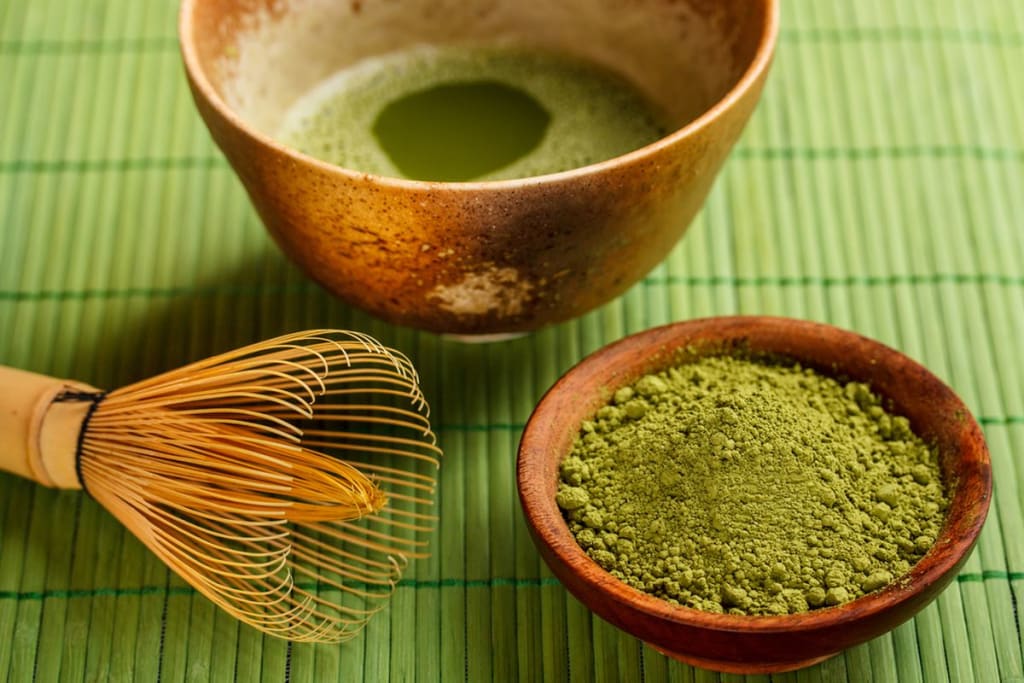
Hello, and welcome back to The Ginger Tea Reviews! Tea is my passion, and I am making it my goal to share my passion with the world! So I'm sure many of you have noticed that I typically add matcha to most of my drinks. It's safe to say that matcha is one of my top favorite teas out there.
But what is matcha, anyway? I know I have run into many tea noobs that give me crazy looks when I mention matcha, and then give me even crazier looks when I tell them how it's prepared. So, in this review, I'm going to tell you everything you need to know about this amazing tea, because it is, literally, the best tea you can get.
What is Matcha?
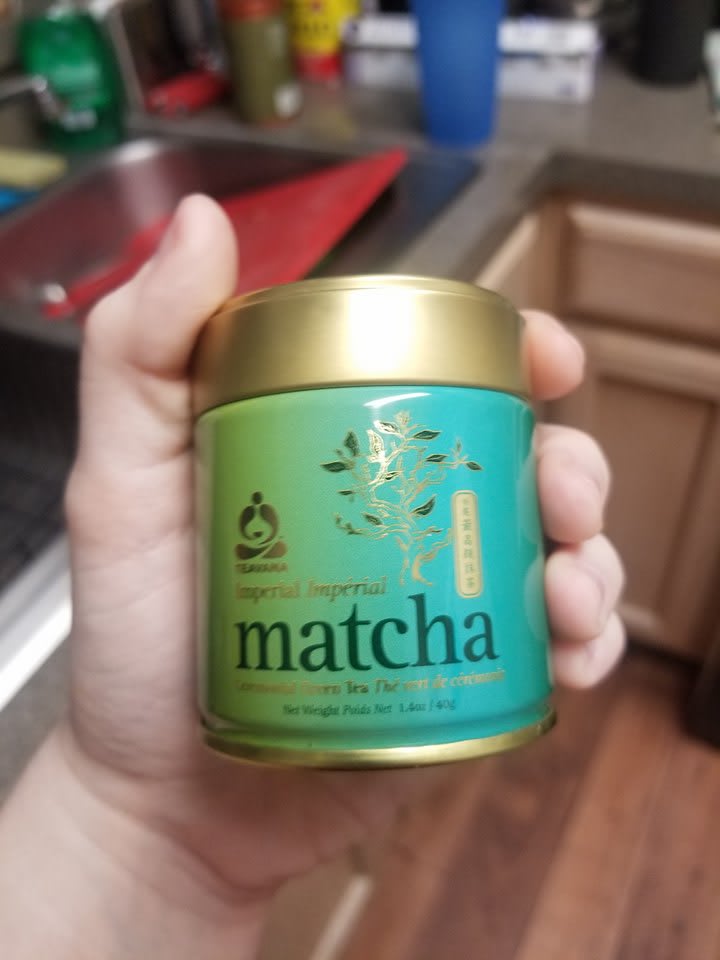
Imperial Grade Matcha
Matcha is powdered green tea, plain and simple. Where most tea leaves are steeped and discarded, you are actually drinking the leaves with matcha. The leaves are ground so finely into a powder that, when you add hot water, it dissolves into a beautiful cup of green tea.
The green tea plants used in matcha are shade-grown for up to three weeks. When the tea leaves are shade-grown, the plant produces more caffeine and theanine. Theanine is an amino acid analogue of the proteinogenic amino acids L-glutamate and L-glutamine, and is typically found in green teas; it adds an earthy, savory flavor to the tea. Matcha is the tea that is used in traditional Japanese Tea Ceremonies, which focuses solely on the preparation, serving, and drinking of matcha while in a meditative state.
Historically speaking, matcha gets its roots from China. During the Tang Dynasty (618-907), tea leaves used to be steamed and formed into tea bricks, because they were easier to store and trade. Tea was prepared by grinding up the tea bricks, and then whisking up the resulting powder in hot water, then adding salt. It was during the Song Dynasty (960–1279) that the method of making powdered tea from steam-prepared dried leaves, then whisking up the powder in hot water, became popular. A Japanese Buddhist Priest named Eisai brought this method to Japan, and the rest is history. Matcha is one of the most important items at Zen Monasteries, to this day.
Uses of Matcha
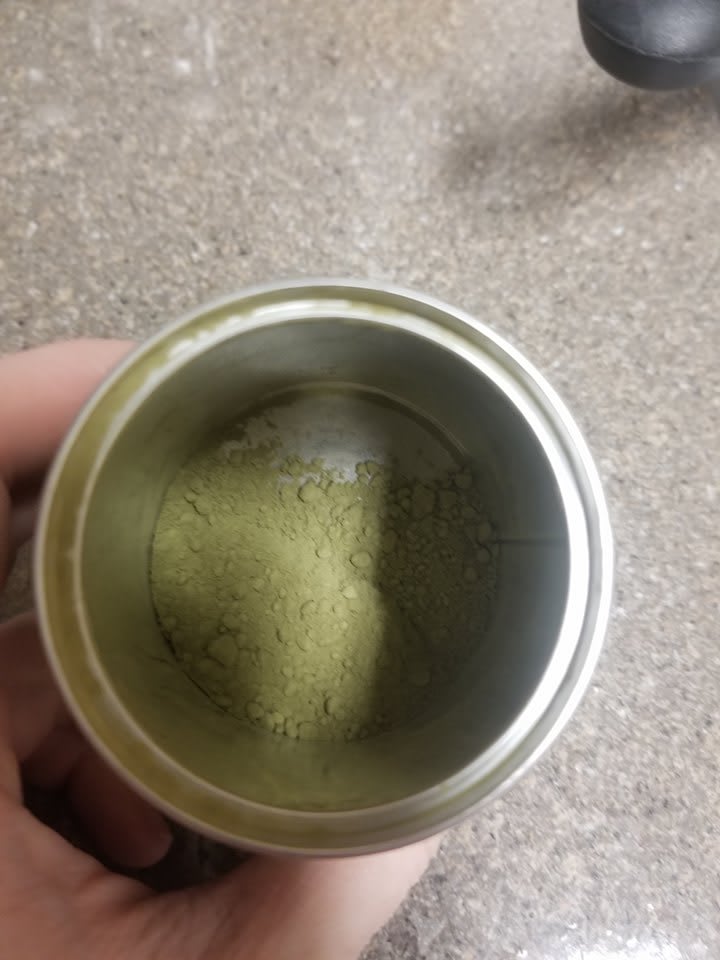
Is it obvious I use matcha a lot?
Matcha can be used in a variety of different ways. From making a delicious tea, to beauty products, to even using the tea in your meals, matcha is one of the most versatile of teas on the market.
Matcha is categorized by grade, so when buying matcha, you should pay close attention to the grade as the grade determines the quality.
Ceremonial Grade matcha (which is what I used in this article today) is what is used in the Tea Ceremonies and in Buddhist Temples. It is typically pricier, and has a more intense sweetness and deeper flavor.
Premium grade matcha is a little cheaper, but is still ripe with the same benefits and flavors. Premium grade matcha is characterized by a fresh and subtle flavor. It is perfect for people just breaking into the world of tea, because it is cheaper and still full of the best health benefits.
Cooking grade matcha is the lowest quality, as it is used mostly in your meals. For example, when you get green tea ice cream, it is typically the cooking grade that is used to make it. It is fine to drink. It just will have a different flavor profile from the premium or ceremonial grades, as the cooking grade is a little more bitter. Cooking grade matcha is what would also be used if you were to make a face mask, or a bath bomb, etc.
How to Scoop Matcha
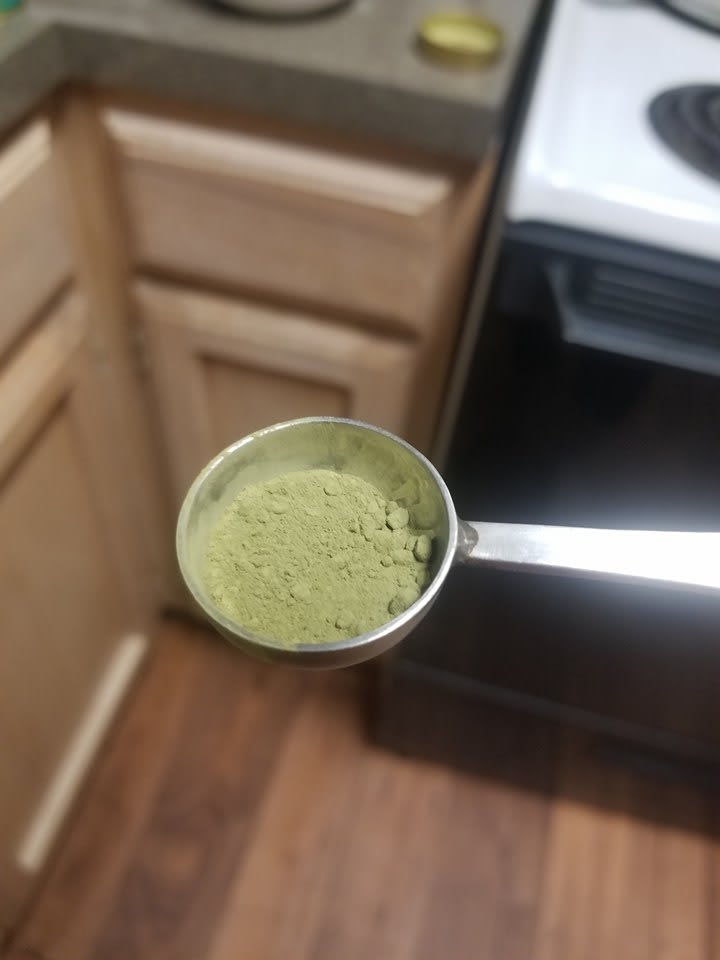
Itty Bitty Scoop
So this is where people normally fail, when it comes to matcha; when you prepare matcha, you are only supposed to use a little bit. Pictured is a teaspoon filled only half-way with matcha powder, and it is still probably a bit too much.
Places like Starbucks are guilty of using multiple scoops of matcha in their drinks, which usually results in a pasty, thick flavor. It also always results in a matcha paste at the bottom of your cup.
In a traditional tea ceremony, they use a thin, bamboo scoop. These scoops can only pick up, at max, a 1/4 teaspoon, maybe a little more. So when preparing your matcha beverages, use no more than half a teaspoon.
How to Prepare Matcha
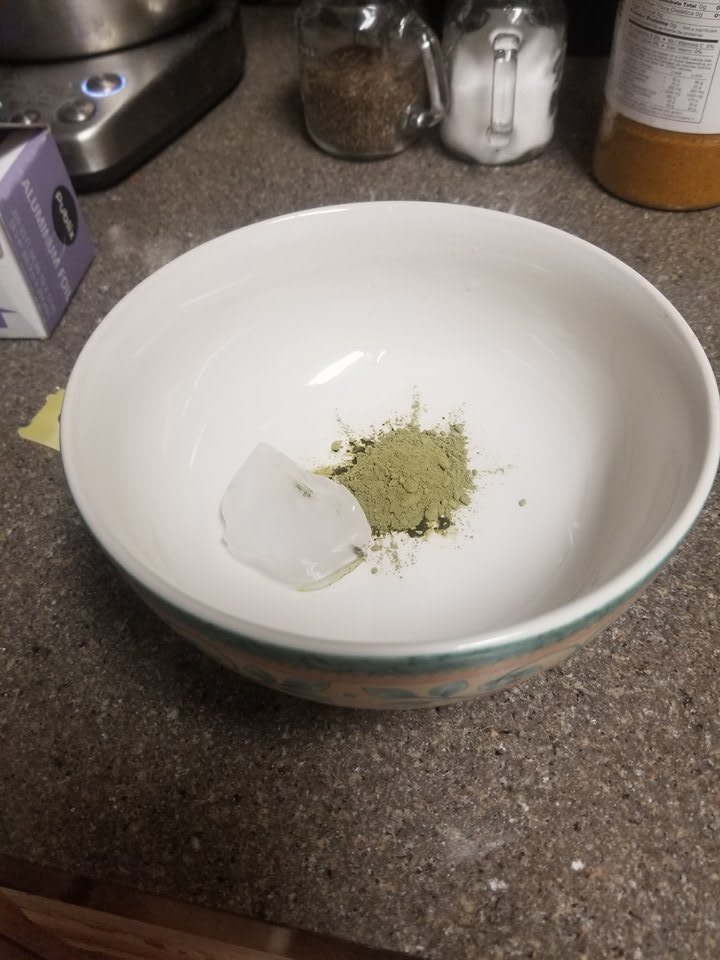
I don't have a nice matcha bowl. :(
Now, again, green tea is sensitive; brew it too hot, and it becomes bitter. Matcha is no different. So matcha needs to be prepared with 175° Fahrenheit water. If you don't have a fancy hot water heater, and you just don't know what the temperature of your water is, you can use boiling water; just add an ice cube to ensure the temperature drops enough to protect your tea.
So add your scoop to a bowl, your ice cube if you need it, then pour only a little bit of water into the bowl. With a bamboo whisk, whisk it really well until it forms a paste. Add a little more water, and keep whisking until you have a full cup. If you don't have a bamboo whisk, they are pretty cheap up at any organic grocery stores. You can use a metal whisk, but it can create a somewhat metallic flavor in your tea. If you want a sweeter flavor, add some honey or sugar to the powder before you whisk it into water. My favorite way to drink matcha is with a little bit of cream or whole milk; it adds a smoothness to the tea that is just so relaxing.
Let's talk health benefits...
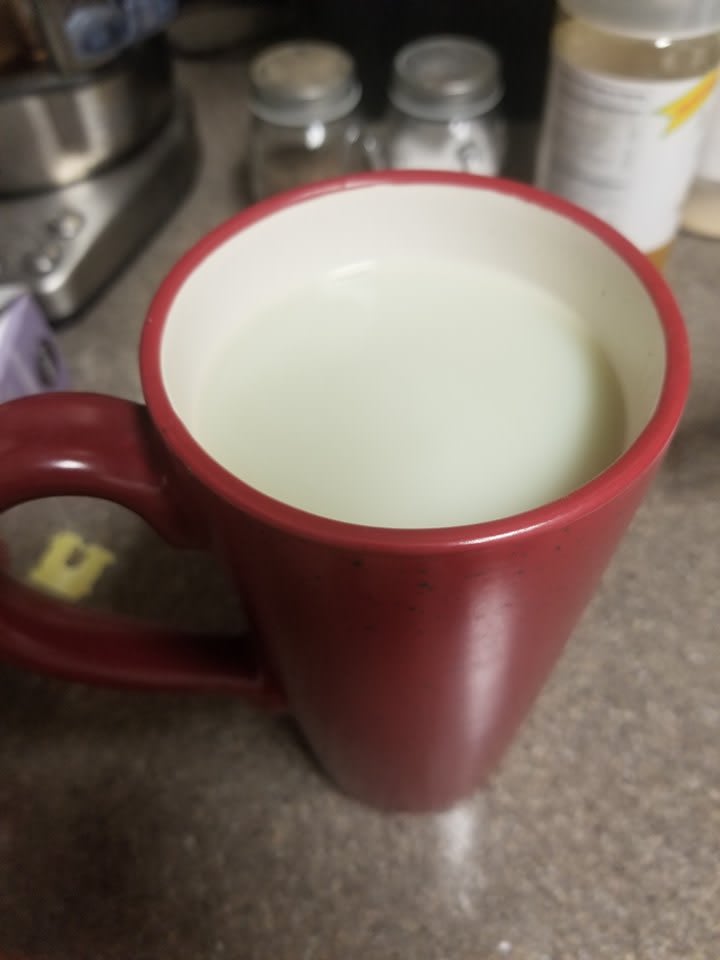
My Finished Product of Deliciousness
So, the reason I use matcha in basically every drink I make is because this tea is magical. While the flavor is subtle and vegetal, that flavor kinda vanishes when you blend it with a stronger flavored tea. Matcha, literally, blends with anything (coffee and hot chocolate included—yes I have made this blend, don't judge me), and it adds all kinds of amazing health benefits to whatever you drink.
Matcha is rich in antioxidants including EGCg, a type of catechin that is part of the flavonoid family. This particular catechin is used in a lot of cancer research, as it is rich in cancer-fighting properties. It has also been shown to boost metabolism, which really comes in handy when trying to lose some weight. Matcha is also rich in vitamins, like Vitamin C and Vitamin A.
It has about as much caffeine as an average cup of coffee. The coolest part about that, though, is that the caffeine in the matcha goes into your blood a different way, so you don't get the caffeine jitters; it just creates an "alert calm."
Let's back track just a bit to when I mentioned the amino acid, theanine. That particular amino acid promotes relaxation and well-being, while also helping your memory and cognitive function. Theanine is common in all teas, but matcha can contain up to five times more of this amino acid than regular green tea, or black tea.
Studies have shown that matcha is also good for your liver, as it can help lower liver enzyme levels (high levels indicate liver disease). Plus it is good for your heart, because it can reduce the levels of bad LDL cholesterol, as well as triglycerides, and can prevent the oxidation of LDL cholesterol, all of which contributes to heart disease.
In Conclusion...
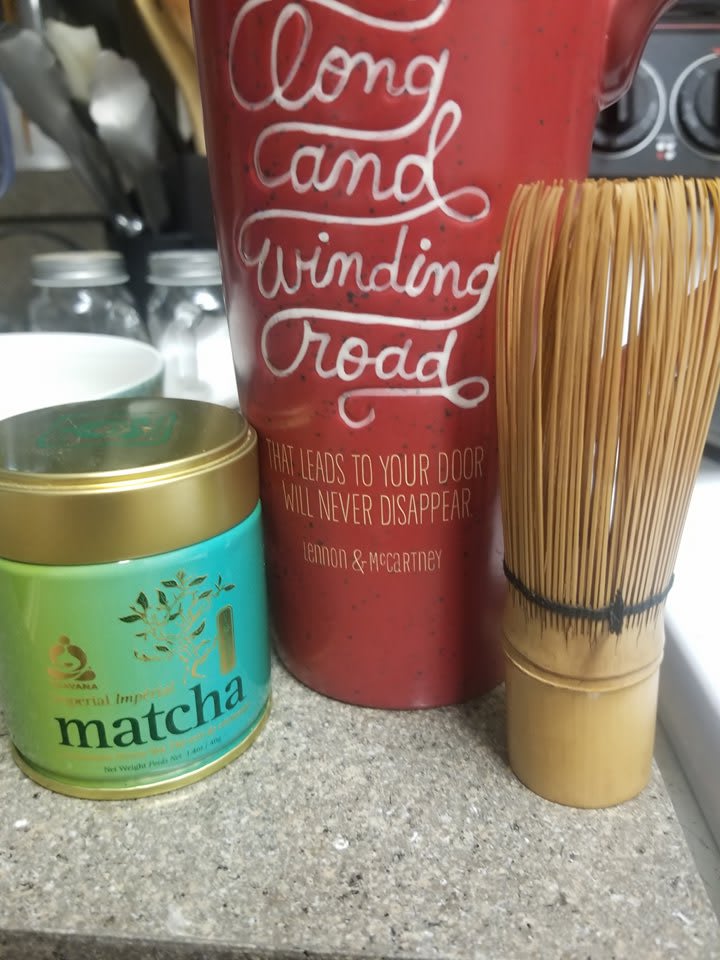
My Best Mug for My Best Tea
So is it any wonder why matcha is my favorite tea? It is so healthy for you, and the flavors are beautiful. If you are not into the vegetal flavors of the tea, by itself, add some milk to create something creamier, or blend it with another type of tea. You don't have to like the flavor of the tea to enjoy the health benefits that come with the tea.
Blend it with your coffee, for an added boost, or with your hot cocoa, or use it in your food! Why not? It only boosts the benefits of whatever it is you're eating!
Matcha is steadily growing more and more popular, so you can easily find various brands of matcha at any grocery store, or organic grocery store. Just pay close attention to the grade of the matcha before you purchase. The only negatives I have ever faced when it comes to matcha is that the preparation can take a little longer than loose leaf tea, or bagged tea. But if you take the time to prepare it, it is so worth it.
Keep and eye out, because I will definitely do more articles about matcha, because it's my favorite and it is so good for you.
Thank you, everyone, for reading! I hope you enjoyed this article! Stick around for more fun and exciting entries on the Ginger Tea Reviews, because there is a great big world of tea out there, and together we can explore every last inch of it!!
- Ginger
PS.
Like what you read? Support my blog by sharing with your friends and family! Share far and wide! Have a suggestion for a review, hit me up! I love to hear from you all! Follow me at:
https://www.facebook.com/The-Ginger-Tea-Reviews-173409853385064/
Or on Instagram at:
https://www.instagram.com/gingerteareviews/
Or on Twitter at:
https://twitter.com/GingerTeaReview
Spread the love and follow me! I appreciate your unending support! Thanks, guys!
About the Creator
Alexis Hustus
I am a writer, tea enthusiast, and a massive nerd. But at least I'm cute! Follow me for fun and educational posts!






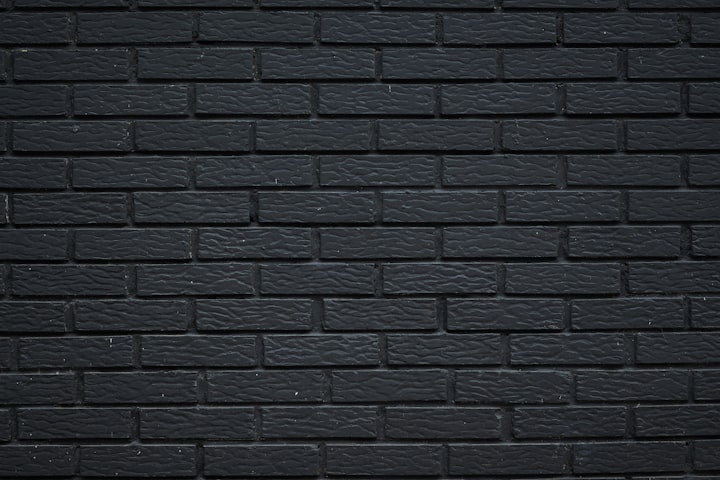
Comments
There are no comments for this story
Be the first to respond and start the conversation.